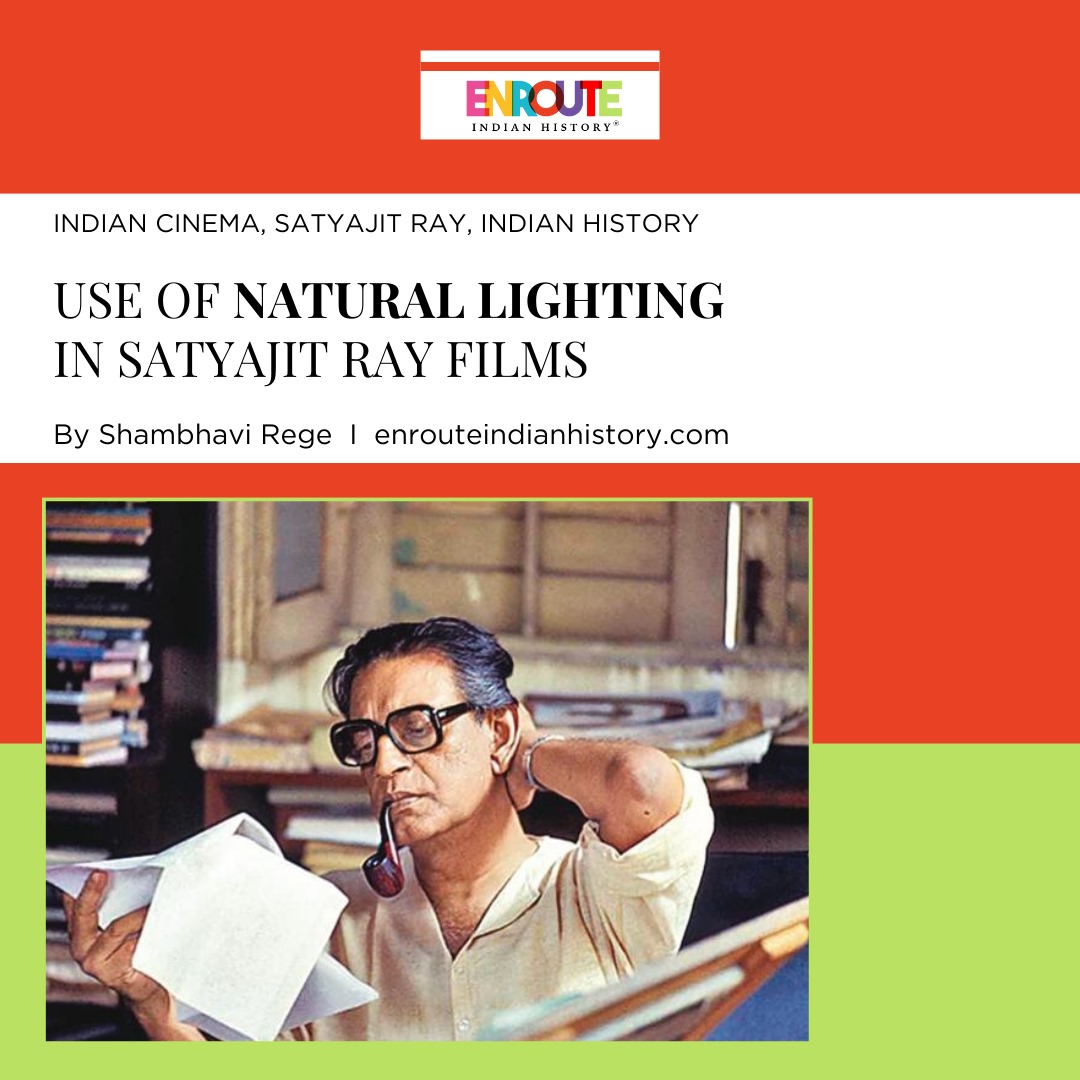
Satyajit Ray- a name that brings back childhood memories related to the adventures of Feluda, the tales of Professor Shonku and the classics such as Pather Panchali, Apur Sansar, Ghaire Baire and Jalsaghar. A legend not only in Bengali cinema but also an exemplary writer and director at the international level, Satyajit Ray was the breath of fresh air in Indian cinema. His fresh approach towards filmmaking which was different from his contemporaries made him shine brightly in the pages of Indian history of cinema and art. He brought a touch of reality and subtlety to the cinema as compared to the grandeur and larger-than-life image of films. His unique approach to realism in films sheds light on the Bengal interiors, even rural places. This approach took him towards international recognition and the Bengali cinema was enriched with his work. His work portrayed the social and cultural issues in India. In all his films, the filmmaking techniques he used played an immense role as they gave his films a touch of familiarity and intimacy.
Satyajit Ray, a legend in filmmaking and the creator of the famous fictional detective, Feluda
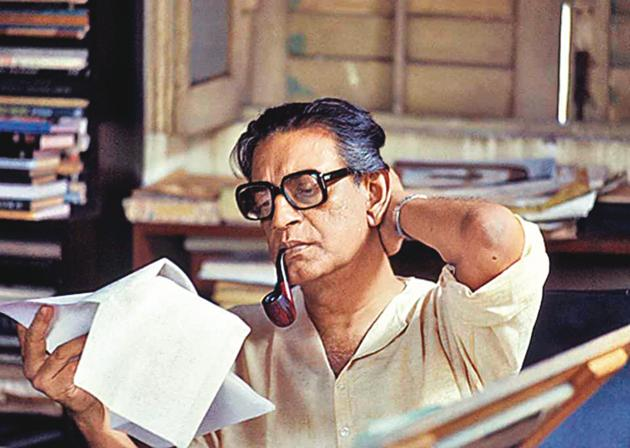
(Source – Vinay Pathak, 2020)
https://www.hindustantimes.com/brunch/celebrating-100-years-of-satyajit-ray-the-man-who-taught-people-about-love-by-vinay-pathak-part-1/story-3cRCoJw3YqT5US6zLhPJlN.html
Satyajit Ray- the legend
To be able to create magic on screen the creator of the film needs to be a wizard. And Satyajit Ray was definitely one, as he showed it through his work time and again. Satyajit Ray was awarded India’s highest civilian award, Bharat Ratna. He was also honoured with the highest decoration in France, the National Order of the Legion of Honor. An inspiration to filmmakers all over the world, he was a literary genius too. Coming from a humble background he reached great heights through sheer determination and his passion for his craft which made the audience fall in love with his work.
Films of Satyajit ray
Ray films were known for their unique themes and portrayal of social and cultural situations in India. His distinctive filming style was aesthetically pleasing while showcasing the rural landscapes and interiors with great authenticity. Truly a man of renaissance, it reflects through his craft. With experience in writing, directing, cinematography and music he was a versatile man. Satyajit Ray’s first movie Pather Panchali is considered as a landmark in Indian cinema and worldwide. His movie Jalsaghar (The Music Room) narrates the story of a wealthy lord who was trying to cling to his memories of the olden days. It represented the conflict in the classic and modern age. Aparajito is known for its stunning cinematography and coming-of-age tale portrayal. Charulata (the lonely wife) the story of a young woman yearning for companionship is depicted by Ray with keen attention to details of the prevalent conditions in those times and the lives of women in colonial and pre-independence Bengal. His last film Agantuk (stranger) had an element of surprise and showcased Calcutta.

A still from Satyajit Ray’s classic, Pather Panchali
Credit – Government of West Bengal
Film making and lighting
A film usually has a running time of 2 to 3 hours. It takes months and sometimes years for a film to be made and brought in front of the public. It includes the efforts of every individual who is related to the films making. It includes everyone right from the director to the lightman. If the director and writer give the film a definite approach and framework, its cinematography breathes life into it. The lighting in it brings the film alive on screen. If the scene is supposed to be at night but the reflection of broad daylight is seen through the windows it definitely ruins the movie watchers experience. Authenticity of the time and weather conditions portrayed in the scene need to be present. Certain times the light or absence of it is used to portray the emotional state and phases of people on screen. Satyajit Ray was one such director who made excellent use of natural lighting available to enhance his work.
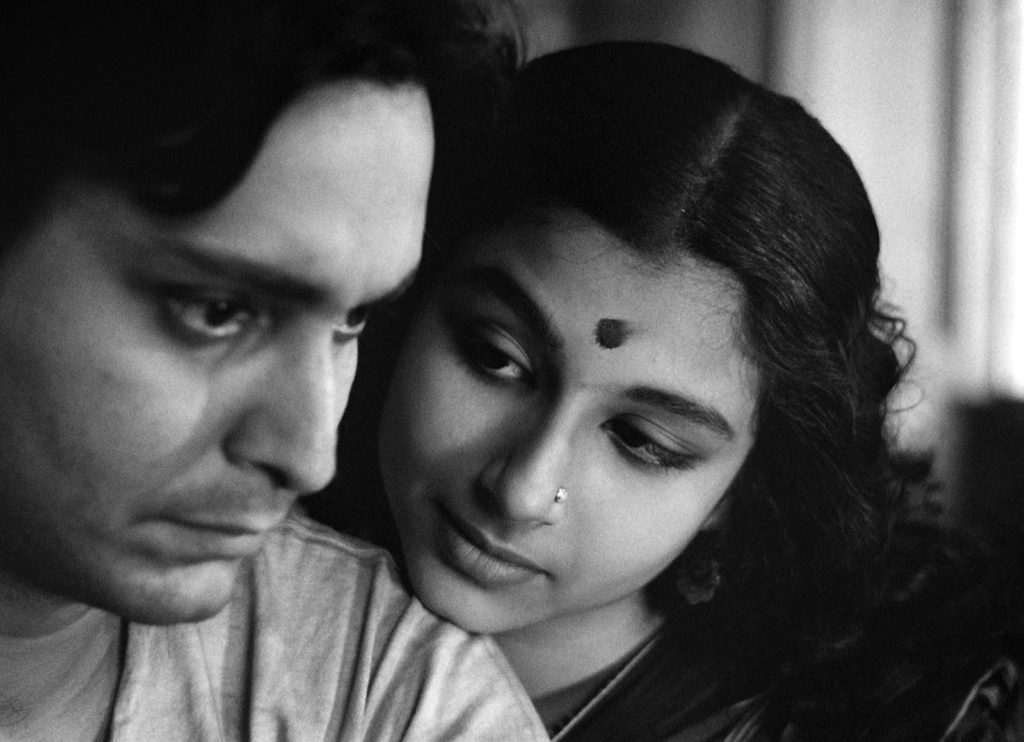
A still from Apur Sansar
(Source – SatyajitRay.org)
Use of natural lighting in Satyajit Ray films
The use of natural lighting was a distinctive feature of Satyajit Ray’s filming style. He strived to showcase authentic and realistic indoor and outdoor frames. His films were mostly shot in real locations, often the rural places and interiors of Bengal were used as locations. While shooting, the use of natural lights enhanced the beauty of the landscape and brought a touch of realism to his films. According to Satyajit Ray, light has always been associated with awareness and understanding. And he brought these aspects into his films as well. The climax scene of the film Charulata has Charulata and her husband in the same frame while the servant holds the lamp. Though the scene was meant to end after Charulata speaks the last dialogue, Ray extended the scene towards the lamp, the light. In the poster of Ghaire Baire, he plays with lights and shadows by depicting the woman on the threshold of the outside world. Shadow is a simple natural occurrence but it was used powerfully.
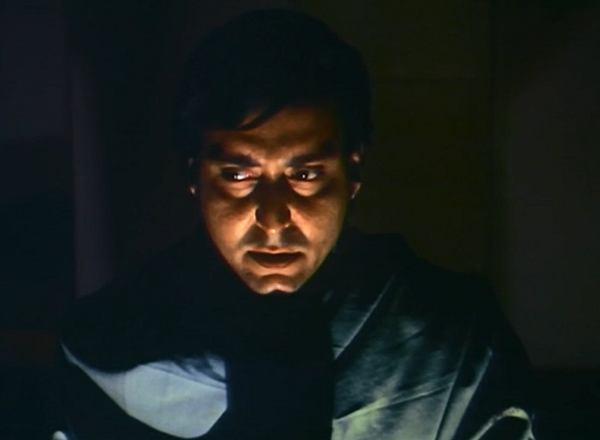
Soumitra Chatterjee in a still from Sonar Kella, a Feluda movie
(Source – Government of West Bengal)
https://scroll.in/reel/975692/fun-camels-and-greed-control-soumitra-chatterjee-recalls-the-shoot-of-satyajit-rays-sonar-kella
The set for his film Devi which featured Sharmila Tagore, was set up outside the technician’s studio. Satyajit Ray utilised normal daylight while shooting it. The night scenes were also shot under natural light. He used a devised system of stimulated daylight to shoot his film Apur Sansar. As most of the scenes were shot in real locations, he adjusted his frames according to the present lighting. As he not only directed films but was also behind the camera several times, he knew the nuances of handling the lighting and its impact on the mood of the film. In the film Kanchenjunga which was a colour film, there were no lights for colours. The scenes that were shot inside the hotel were made using 2 to 3 large mirrors that reflected the sunlight in the room onto a stretched cloth and brought in colours.
A still from Charulata
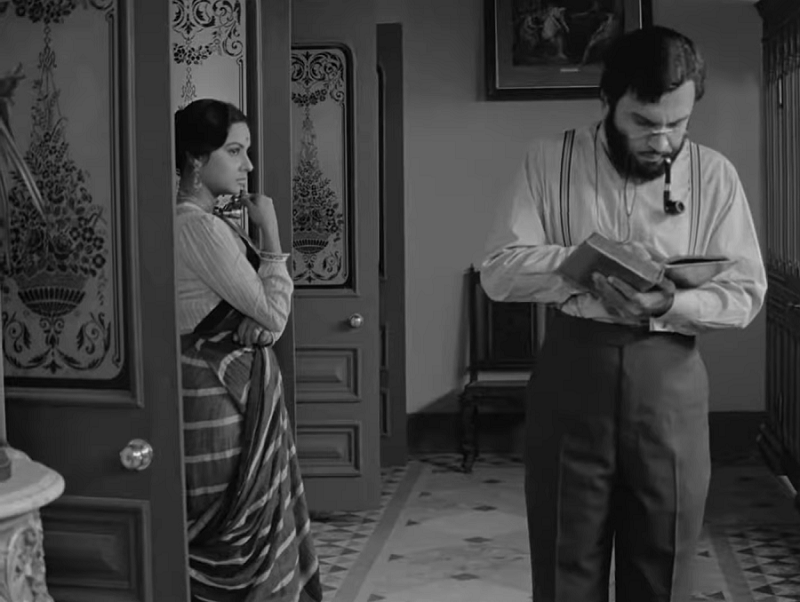
(Source – RD Bansal)
https://scroll.in/reel/993675/madhabi-mukherjee-on-charulata-its-enigmatic-last-scene-and-the-sea-that-returned-an-offering
During the shoot of his iconic film, Pather Panchali, Satyajit Ray preferred outdoor shooting to capture the organic lighting. Sometimes due to weather conditions, the shooting had to be halted. However, the natural lighting and weather conditions set the sombre mood of the movie. Another film that was majorly shot outdoors was Sonar Kella. Sonar Kella, a gem of a film in Indian cinema , is also known for its protagonist, the famous fictional detective Feluda. While filming this classic, Ray avoided the use of yellow. It is used only when the story finally arrives in Jaisalmer, according to him the first sight of yellow is when Mukul sees the golden fortress. The sun rays reflecting from the resplendent fort gave it the natural look of real gold. Through his unique techniques and lighting styles, Satyajit Ray truly brought in a touch of intimacy and closeness that the audience could connect with on screen. The scenes looked more authentic and as if they were taking place in some real place, with real people. In creating this magic on screen Ray was helped by his associates who were legends in their own fields.
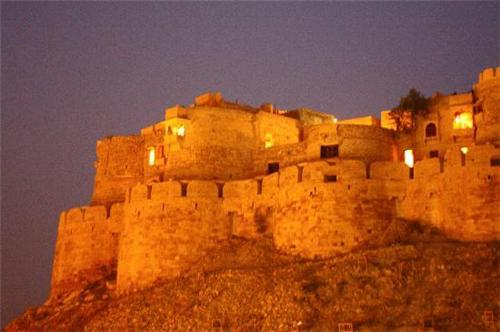
The Golden Fortress, Jaisalmer Fort. It turned into an iconic destination for Feluda fans
(Source – Jaisalmer Online)
Satyajit Ray and Subrata Mitra
It was the year 1950 when two aspiring film artists from West Bengal were in search of opportunities to work in the film industry. That year, the renowned film director from France, Jean Renoir came to India to shoot his film ‘The River’. The two aspiring artists, Satyajit Ray and Subrata Mitra were given a chance to be a part of the film’s crew. They observed and studied on the sets, eager to learn from the best. Jean Renoir was impressed with Subrata Mitra’s efforts and encouraged him to pursue cinematography. The same year Satyajit Ray asked Subrata Mitra to be the cameraman in his first movie Pather Panchali and the rest is history. They went on to work together on famous films such as Paras Pathar, Apur Sansar, Devi, Kanchenjunga, Charulata and Nayak. The two young aspiring individuals went on to become legendary, Satyajit Ray as a director and writer and Subrata Mitra as the one who brought in new techniques in set lighting. They both revolutionised the filmmaking process.
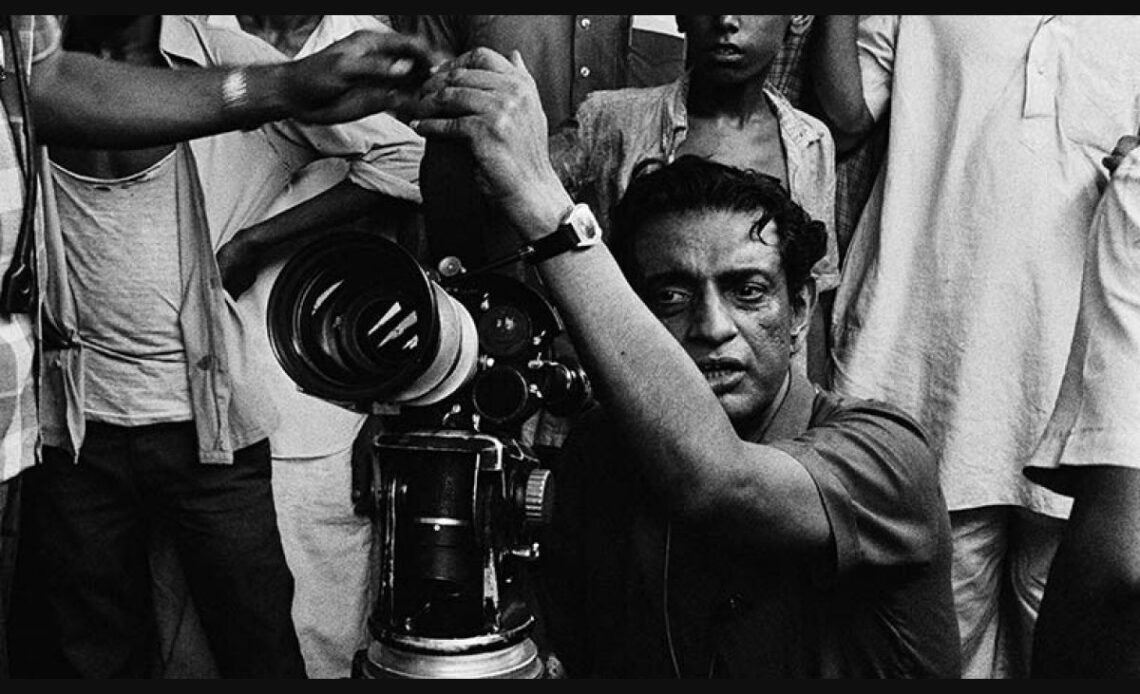
Ray often handled the camera on set
(Source – https://aruneshblog.com/pather-panchali-diving-into-satyajit-rays-world-of-cinema/)
Satyajit Ray- a ray of light that struck the Bengali cinema and emitted a spectrum of colours in Indian cinema and art. The aura he created sheds light on his craft. His approach towards filmmaking, direction, script writing, use of natural lighting and music composition are all representative of his quest for staying true to his own vision. In spite of this, Satyajit Ray’s work remains relatively unknown to the general audience outside West Bengal. Literature and movie lovers from all parts of the country sing praises for him and his craft but his work is yet to reach the general masses, the interiors of the country as his films were made in Bengali, a regional language spoken by few millions. Yet he is rightly called a legendary figure in Indian cinema and even worldwide, an inspiration to the aspiring and upcoming filmmakers who idolise his work.
References
Ganguly, Keya. City, Emergence and the Films of Satyajit Ray. University of California Press, 2010.
Sandip Ray. Satyajit Ray on Cinema. Columbia University Press, 2013.
https://www.bfi.org.uk/sight-and-sound/interviews/satyajit-ray-moral-attitude
https://www.filmcomment.com/article/interview-satyajit-ray/
https://www.firstpost.com/entertainment/ray-esque-the-connection-of-a-few-satyajit-ray-films-and-the-icon-of-goddess-durga-13278882.html
https://www.artforum.com/features/satyajit-ray-at-home-in-the-world-203554/
https://www.wfcn.co/blog/satyajit-rays-technique-of-filming
- May 15, 2024
- 6 Min Read























